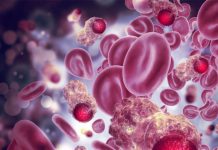Dr. Robert Judson-Torres of the University of Utah has recently published a study in eLife Magazine, explaining how moles and melanomas are formed and why moles can change into melanoma, according to Medical Xpress.
Moles, which are usually harmless, and melanomas, which are malignant or cancerous, originate from the same cells known as melanocytes.
Melanocytes give color to the skin and protect it from the harmful sun rays. There are specific changes to the DNA sequence of these skin cells, known as BRAF gene mutations. These mutations are found in more than 75% of moles. The same changes are also found in 50% of melanomas and cancers of the lung and colon.
Experts believe that when melanocytes only have the BRAF gene mutation the cell stops dividing, resulting in a mole, and when melanocytes have other mutations with BRAF, they divide uncontrollably, causing melanoma. This model is known as oncogene-induced senescence,” according to Medical Xpress.
Dr. Judson-Torres, who is also a Huntsman Cancer Institute (HCI) researcher, said, “A number of studies have challenged this model in recent years. These studies have provided excellent data to suggest that the oncogene-induced senescence model does not explain mole formation but what they have all lacked is an alternative explanation—which has remained elusive.”
The study analyzed moles and melanomas that were donated by patients and used transcriptomic profiling and digital holographic cytometry.
Transcriptomic profiling helps determine molecular differences between moles and melanomas, while digital holographic cytometry helps track changes in human cells.
Dr. Judson-Torres said, “We discovered a new molecular mechanism that explains how moles form, how melanomas form, and why moles sometimes become melanomas.”
He explained that melanocytes that turn into melanoma do not need to have additional mutations, but they are actually affected by environmental signaling. Melanocytes express genes in different environments, telling them to either divide uncontrollably or stop dividing altogether, per the news outlet.
“Origins of melanoma being dependent on environmental signals gives a new outlook in prevention and treatment,” explained Dr. Judson-Torres. “It also plays a role in trying to combat melanoma by preventing and targeting genetic mutations. We might also be able to combat melanoma by changing the environment.”





















